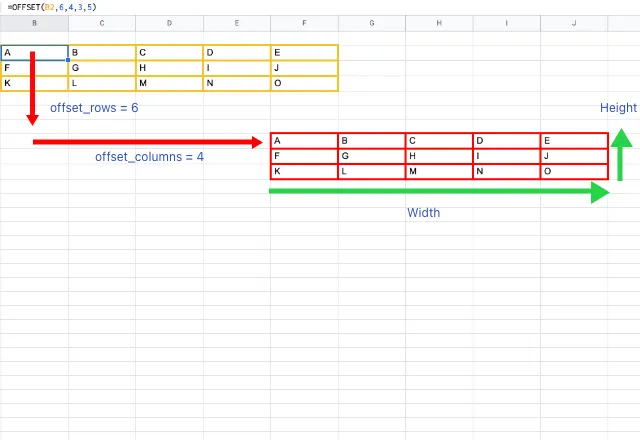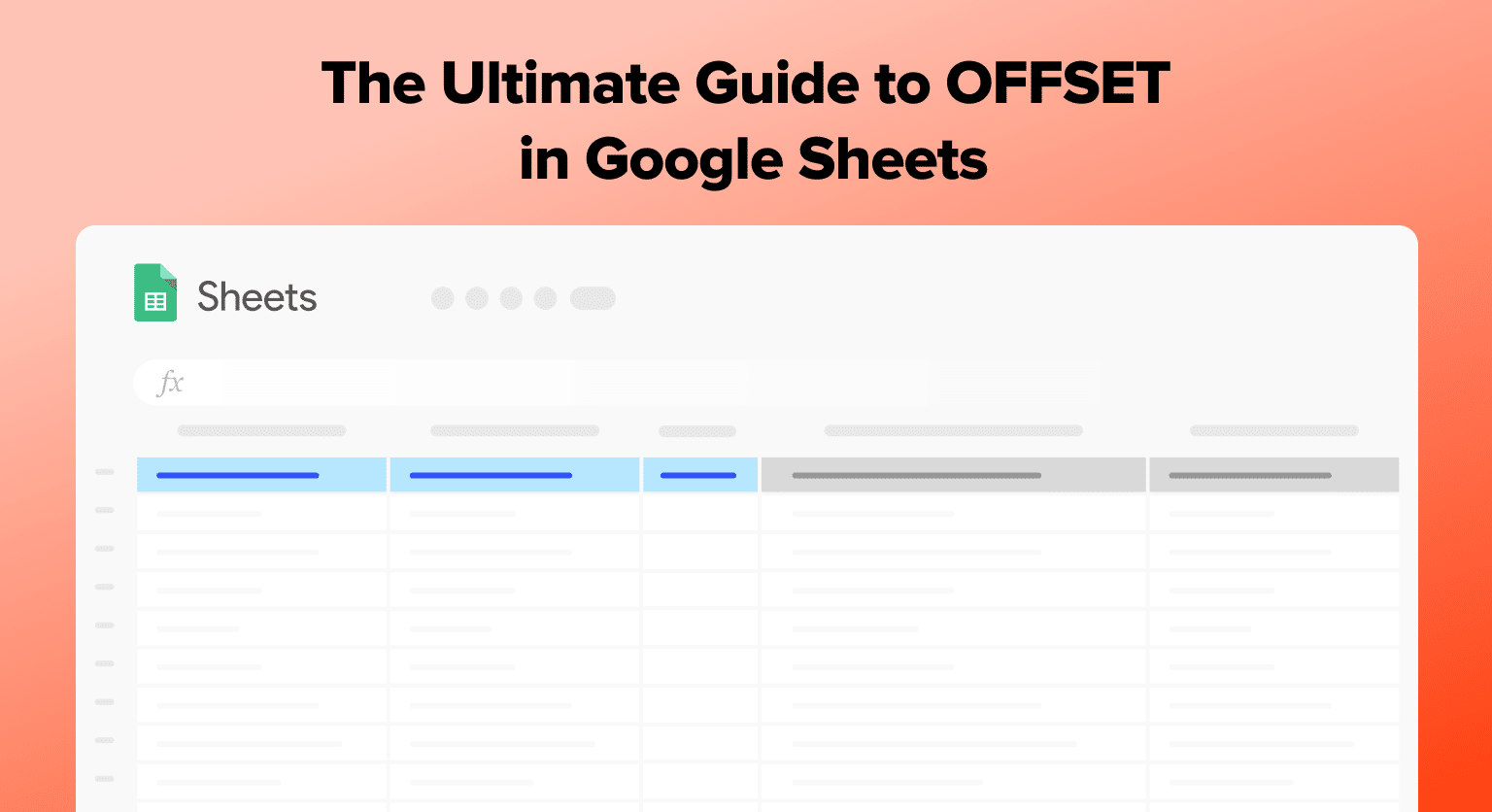
Google Sheets is an incredibly powerful tool for data analysis and manipulation. One of the most versatile and powerful functions in Google Sheets is the OFFSET function. In this article, we will delve into the world of OFFSET and explore its capabilities, benefits, and best practices for using it effectively.
What is the OFFSET Function?
The OFFSET function in Google Sheets is a powerful and flexible function that allows you to reference a range of cells that is offset from a specified starting point. It returns a range of cells that is a specified number of rows and columns from the starting point.

The syntax for the OFFSET function is as follows:
OFFSET(reference, rows, cols, [height], [width])
referenceis the starting point for the offset.rowsis the number of rows to offset from the starting point.colsis the number of columns to offset from the starting point.heightandwidthare optional parameters that specify the size of the range to be returned.
How to Use the OFFSET Function
The OFFSET function can be used in a variety of ways to manipulate and analyze data in Google Sheets. Here are a few examples:
- Offsetting a range of cells: You can use the OFFSET function to offset a range of cells by a specified number of rows and columns. For example,
=OFFSET(A1, 2, 3)returns a range of cells that is 2 rows and 3 columns from cell A1. - Creating a dynamic range: You can use the OFFSET function to create a dynamic range that adjusts automatically when data is added or removed. For example,
=OFFSET(A1, 0, 0, COUNT(A:A), 1)returns a range of cells that starts at cell A1 and extends down to the last cell with data in column A. - Referencing a range of cells: You can use the OFFSET function to reference a range of cells that is offset from a specified starting point. For example,
=SUM(OFFSET(A1, 1, 0, 10, 1))returns the sum of the values in the range of cells that starts 1 row below cell A1 and extends down 10 rows.
Benefits of Using the OFFSET Function
The OFFSET function offers several benefits when working with data in Google Sheets:
- Flexibility: The OFFSET function is highly flexible and can be used in a variety of ways to manipulate and analyze data.
- Dynamic ranges: The OFFSET function allows you to create dynamic ranges that adjust automatically when data is added or removed.
- Efficient data analysis: The OFFSET function can be used to perform complex data analysis tasks efficiently and effectively.

Best Practices for Using the OFFSET Function
Here are some best practices to keep in mind when using the OFFSET function in Google Sheets:
- Use relative references: When using the OFFSET function, it's best to use relative references (e.g., A1) instead of absolute references (e.g., $A$1).
- Specify the size of the range: If you're using the OFFSET function to return a range of cells, make sure to specify the size of the range using the
heightandwidthparameters. - Use the OFFSET function with other functions: The OFFSET function can be used in combination with other functions, such as the SUM and AVERAGE functions, to perform complex data analysis tasks.
Common Errors When Using the OFFSET Function
Here are some common errors to watch out for when using the OFFSET function in Google Sheets:
- Incorrect syntax: Make sure to use the correct syntax for the OFFSET function, including the
reference,rows,cols,height, andwidthparameters. - Incorrect references: Make sure to use the correct references when using the OFFSET function, including relative and absolute references.
- Incorrect range sizes: Make sure to specify the correct size of the range when using the OFFSET function.

Troubleshooting the OFFSET Function
If you're experiencing issues with the OFFSET function in Google Sheets, here are some troubleshooting steps to try:
- Check the syntax: Make sure you're using the correct syntax for the OFFSET function.
- Check the references: Make sure you're using the correct references, including relative and absolute references.
- Check the range sizes: Make sure you're specifying the correct size of the range.
Conclusion
In conclusion, the OFFSET function is a powerful and versatile tool in Google Sheets that can be used to manipulate and analyze data in a variety of ways. By following the best practices outlined in this article, you can get the most out of the OFFSET function and improve your data analysis skills.

We hope this article has been helpful in mastering the OFFSET function in Google Sheets. If you have any questions or need further assistance, please don't hesitate to ask.
Take Action
- Practice using the OFFSET function in Google Sheets to improve your data analysis skills.
- Experiment with different uses of the OFFSET function, such as offsetting a range of cells and creating dynamic ranges.
- Share your experiences and tips for using the OFFSET function in the comments below.
Gallery of Google Sheets Offset Function




FAQs
What is the OFFSET function in Google Sheets?
+The OFFSET function in Google Sheets is a powerful and flexible function that allows you to reference a range of cells that is offset from a specified starting point.
How do I use the OFFSET function in Google Sheets?
+The OFFSET function can be used in a variety of ways to manipulate and analyze data in Google Sheets. You can use it to offset a range of cells, create dynamic ranges, and reference a range of cells.
What are some common errors when using the OFFSET function in Google Sheets?
+Some common errors when using the OFFSET function in Google Sheets include incorrect syntax, incorrect references, and incorrect range sizes.











